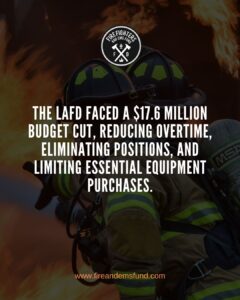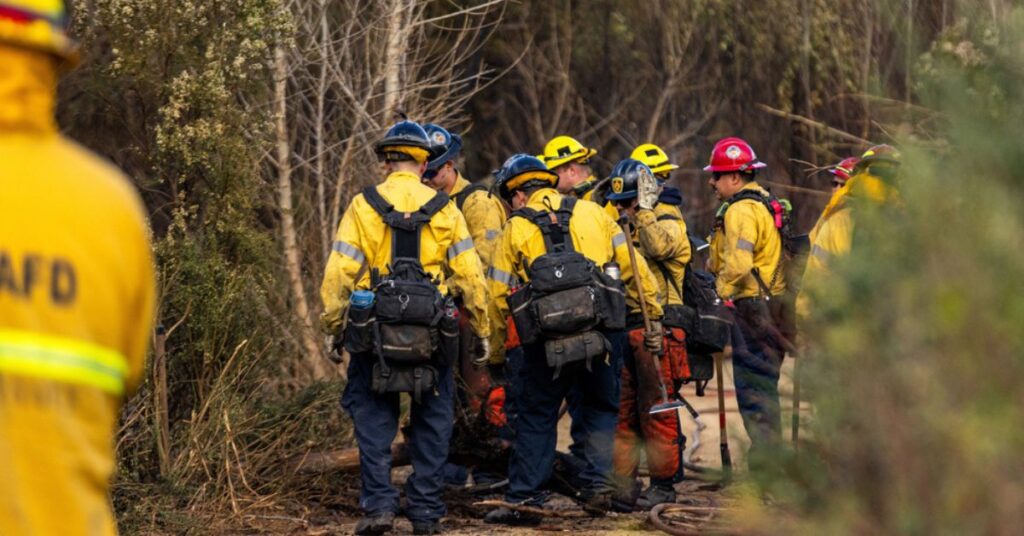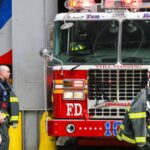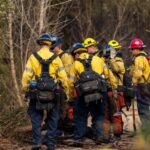Just five days after taking office, President Trump visited Southern California to personally survey the damages brought by the wildfires, which had ravaged the area just a couple of weeks prior. After walking around Pacific Palisades, his mood could not have been more somber.
“It is devastation. It really is an incineration”.
Seeing the damage first-hand may help anyone grasp its enormity. Between January 7th and January 21st, 27 people lost their lives, 15,467 structures were destroyed, and over 40,000 acres were left scorched. More than 16,000 first responders left their sweat and tears across California – and we owe it to them to examine the factors that made this season so destructive.
Were Firefighters Properly Funded & Equipped for the LA Fires?
2025 caught Californian Fire Departments in a difficult financial position. In the month preceding these fires, LAFD Fire Chief Kristin Crowley had already raised serious concerns about budget constraints hampering emergency response capabilities. The department faced a $17.6 million budget reduction (2%) between fiscal years 2023-24 and 2024-25, which directly impacted their operational readiness.
According to Chief Crowley, these cuts impact overtime hours “severely limited the Department’s capacity to prepare for, train for, and respond to large-scale emergencies.” The department also eliminated 58 positions and reduced essential equipment purchases, including breathing apparatus for firefighters.
During the crisis, LAFD leadership acknowledged that while they deployed all available resources, budget limitations affected their response capabilities “to a certain factor.” In Chief Crowley’s words, “We did exactly what we could with what we had.”

The Achievements of First Responders
Despite these financial constraints, firefighters demonstrated extraordinary courage and effectiveness in their response to the January fires. The coordinated effort involved 28 fire departments across Los Angeles County, with additional support from firefighters from five other states. The scale of the response highlighted the dedication of these first responders, who worked tirelessly despite knowing their department had been operating under significant budget pressures.
The magnitude of the response required unprecedented cooperation, leading Governor Newsom to activate the California National Guard. The Defense Department also provided additional equipment and manpower, creating a unified front against the fires. This collaborative effort demonstrated the firefighting community’s ability to come together in times of crisis, even when individual departments faced resource limitations.
Looking to the Future: What Does Union Leadership Have to Say?
Before the fires, in December 2024, Board of Fire Commissioner President Genethia Hudley-Hayes said, “It is not unfair to say that we are in crisis mode within the Los Angeles Fire Department.” Meanwhile, the Executive Director of the United Aerial Firefighters Association called the aftermath “totally demoralizing”.
These stark assessments came despite a recently approved four-year $203 million contract with the firefighter’s union aimed at boosting wages and health benefits. However, the new budget agreement also included significant operational cuts.
The fire department’s financial challenges were further evidenced by a $66.6 million overspend in the 2023-24 fiscal year, primarily due to unbudgeted contracts, unused sick time, and overtime costs. While Mayor Karen Bass maintained that budget cuts did not impact the department’s ability to handle the fires, attributing challenges primarily to unprecedented wind conditions, fire department leadership painted a different picture.
In her interview with CBS News’ Norah O’Donnell, Commissioner Hudley-Hayes confirmed that budget cuts had limited their response capabilities. Faced with an unprecedented situation, fire departments deployed every available resource to combat the fires – they just didn’t have enough.
So how do we prevent putting our first responders and communities through such strain again? Through advocacy, ended Hudley-Hayes: “Anybody who knows a council person really and truly needs to be either going to city council, talking to their council person, talking in their neighborhood councils, doing whatever they need to do because we really are at a crisis point.”








